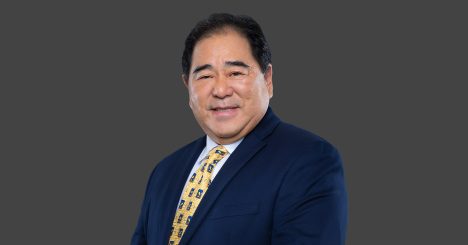When it filed a lawsuit against a Hawai‘i tour company in February 2017, the Equal Employment Opportunity Commission (EEOC) issued a press release containing salacious allegations of male-on-male sexual harassment by the tour company’s president. The federal judge presiding over the case recently issued a decision that significantly limits the EEOC’s case. However, the lawsuit is not over yet.
Male Harassment Alleged
Consistent with its usual practice, when the EEOC filed a lawsuit in February 2017 against Discovering Hidden Hawaii Tours, Inc., the EEOC issued a press release announcing the suit and detailing some of the agency’s allegations against the Hawai‘i tour company. The EEOC brought the lawsuit on behalf of five former employees on the theory that the tour company had engaged in a pattern or practice of harassment against male employees.
The press release alleged that the president of the tour company “engaged in a pattern of sexually harassing young males after recruiting them to work for his companies,” including “inviting males to join in sex parties with him; showing them pornographic videos and photos; requiring them to show him their private parts in order to be considered for employment; making employment opportunities contingent upon engaging in sexual acts with him; and performing unwanted sexual acts on male employees.” The press release encouraged people who had experienced harassment or had information about the harassment alleged in the lawsuit to contact the EEOC.
Company Seeks Dismissal
The tour company filed a motion asking the judge to dismiss the EEOC’s case. The company argued that the claims relating to two of the former male employees should be dismissed because the alleged harassment of those individuals occurred too long ago. With respect to other former male employees, the company argued the EEOC’s suit did not contain sufficient allegations to allow the case to proceed.
Untimely Claims
Judge Derrick Watson, who is perhaps best known as the judge who struck down President Trump’s travel ban, agreed with the tour company that claims relating to two of the former male employees had to be dismissed because the claims were time-barred. To pursue a claim of discrimination, harassment or retaliation under Title VII, a charge of discrimination must have been filed with the EEOC within 300 days of the alleged wrongful act. Because harassment generally occurs over a period of time, a claim of harassment can be timely if at least one act of alleged harassment occurred in the 300 days prior to the filing of the charge and the earlier acts of harassment are all part of the same claim.
Only one charge of discrimination had been filed with the EEOC in November 2015. The individual who filed that charge alleged harassment occurring within the 300 days prior to the filing of the charge. However, the EEOC was also attempting to bring claims on behalf of other former employees. The alleged harassing conduct against two of those individuals occurred more than 300 days prior to the charge that was filed. The EEOC argued it could do that because the harassment against all of these former male employees was part of the same pattern or practice of unlawful conduct by the company. Judge Watson rejected that argument and dismissed the claims that the EEOC attempted to bring on behalf of the two former employees that allegedly experienced harassment more than 300 days prior to the filing of the charge of discrimination.
Insufficient Allegations
While other former employees had timely claims, the tour company argued their claims should nevertheless be dismissed because the allegations in the EEOC’s complaint were not sufficient. For example, the EEOC alleged that some male employees were “constructively discharged.” A claim for constructive discharge can be brought if the “working conditions become so intolerable that a reasonable person in the employee’s position would have felt compelled to resign.” However, an “employee who quits his employment without giving his employer a reasonable chance to resolve the problem ‘has not been constructively discharged.’” Judge Watson found the EEOC’s complaint to be deficient because it didn’t allege that the two male employees who the EEOC said had been constructively discharged had provided notice to the tour company about the alleged harassment in an effort to have the conduct addressed before quitting. Judge Watson also ruled that the EEOC’s complaint didn’t sufficiently allege that these two former employees had resigned as a result of intolerable working conditions.
Orgy Talk Isn’t Enough
Finally, with regard to one individual, Judge Watson found the EEOC’s allegation of harassment was not sufficient. The complaint alleged that the tour company’s president made unwelcome sexual comments during this individual’s recruitment and subsequently during his employment, including asking what “sexual stuff” the individual was into and talking about sex parties and orgies. Judge Watson concluded that the EEOC’s allegations were not sufficient to show that the conduct was either severe or pervasive enough to rise to the level of an actionable claim for harassment. Accordingly, the harassment claim relating to that individual was dismissed.
EEOC Can Amend
Although Judge Watson granted the tour company’s dismissal motion, he gave the EEOC an opportunity to file an amended complaint to try to fix the deficiencies. If the EEOC is able to do that, the suit would proceed into the phase called discovery where both the EEOC and the tour company could request documents and other information relevant to the surviving claims. If the EEOC does not fix the deficiencies, the tour company could ask Judge Watson to dismiss the lawsuit again and would likely ask that the EEOC not be permitted a chance to amend further.
EEOC v. Discovering Hidden Hawaii Tours, Inc., No. 17-00067 (D. Haw. Sept. 21, 2017)
Bottom line
This lawsuit started with the filing of a single charge of discrimination by one former employee. It morphed into a much bigger matter when the EEOC found other former employees that alleged they had been subjected to similar forms of harassment. The case illustrates the importance of treating all discrimination charges seriously. It also shows that there are some ways to limit the EEOC’s attempts to expand single claims into multiple employee lawsuits.
Amanda M. Jones is a partner in Cades Schutte’s Litigation Department. She is currently the editor of Hawai‘i Employment Law Letter, where this article first appeared. In that role, she is also a member of Employers Counsel Network.





